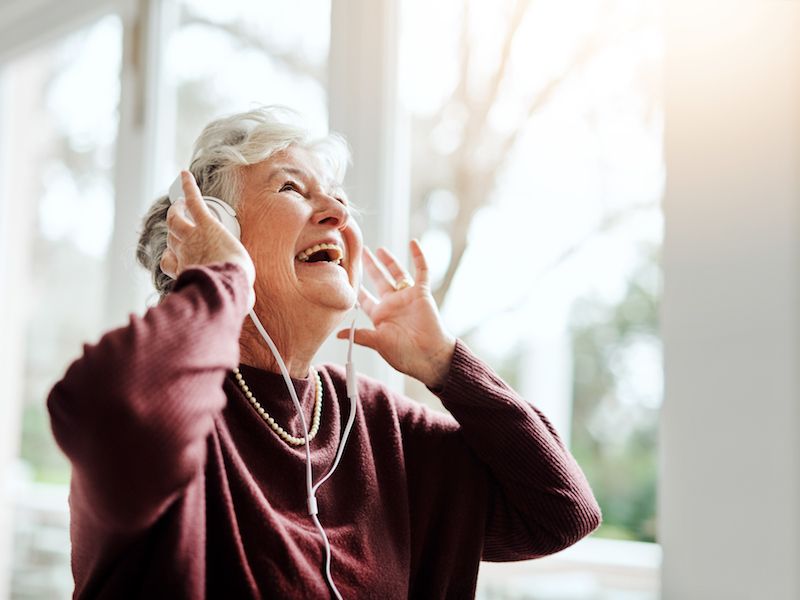
Noise-related hearing loss doesn’t just impact people who work in loud settings, like construction workers or heavy metal roadies. It doesn’t even have to be work-related, leisure-related noise exposure can be damaging, also. What kind of exposure are we discussing? Loud sounds heard through headphones, whether it be music, gaming, streaming video, or even an audiobook with the volume cranked up.
You might not believe your smartphone or tablet can go that loud. But these devices can attain sustained volumes of over 105 dB, which is near the ordinary human threshold for pain. Your ears will literally start to feel pain at this volume. So what’s the plan to safeguard against this kind of noise-related hearing loss?
The volume level here is important. An easy shorthand that’s widely suggested is the 60/60 rule: Listen with the volume at no more than 60% for 60 minutes or less at a stretch (because how long you listen for matters, too).
Your Hearing Aids Can be Set up For Music
Be sure, if you’re utilizing hearing aids, you don’t try to drown out other sounds by cranking your streaming music up too high. In addition, ask us about how best to listen to music. If you’re a musician or someone who loves music you might have noticed that most hearing aids are created to enhance the quality of voices…not necessarily music. We might be able to change the configuration to lessen feedback and noise while increasing some frequency ranges to enhance the quality of sound while listening to music.
How to Select The Best Headphones
If you don’t wear hearing aids, there are a lot of options for getting headphones. It might be a matter of personal choice, but there are some things you should consider there too.
Headphones That go Over The Ears
Over the ear headphones are becoming popular again but you most likely won’t see the old foam covered speakers that used to come with a walkman. Often shockingly costly, they provide a large variety of color possibilities and celebrity endorsements, and yes, superior sound quality. And unlike those little foam pads, these go over the whole ear, blocking outside sounds.
Conventional perception is that these are less dangerous than in-ear headphones because the source of the sound is further from your eardrum. But because the speakers are bigger they are often capable of much higher sound level. Additionally, noise-canceling could possibly help you ignore the crying baby on your flight, but in other situations, it can block sounds you should hear (such as a car honking). But on the upside, you won’t need to contend with outside noise so you can enjoy your music at lower volumes.
Earbuds
The standard earbuds are well known for inferior quality of sound, although lots of people still use them because hey, they were included with the phone. Particularly, with newer Apple devices, it’s simply easier to use the earbuds that were provided with the device because it probably won’t have a headphone jack.
The downside, besides the poor sound quality, is that basic earbuds can’t cancel outside noises, so you’re more likely to crank up the volume. Once again,, though it’s often said that earbuds are problematic because you put them into your ear so their speakers are extremely close to your eardrum, volume is really the biggest issue.
Noise Canceling Earbuds
More comfortable than standard earbuds, models with a round rubber tip are the choice of many people because they help stop outside sound. The rubber conforms to the shape of your ear, producing a seal that stops other sounds from entering. But these earbuds can also block out noises you need to hear and volume is still the primary issue. Needless to say, these won’t work for you if you wear hearing aids.
Several pairs will probably need to be tested before you find headphones that are what you are looking for. Your expectations, acoustically, will be different depending on what kind of use you usually give them. The relevant thing is to find headphones that make it comfortable for you to listen at a safe volume.
Don’t Cut Corners When Dealing With Your Hearing
How can you be sure it’s safe? If you have a smartphone, you can get an app for that, you can download the National Institute for Occupational Safety and Health’s free Sound Level Meter app. There are different apps out there, but research has found that the accuracy of these other apps is hit-and-miss (additionally, for reasons yet unknown, Android-based apps have been shown less reliable). That motivated NIOSH to develop an app of their own. The app lets you measure outside sounds, but sounds coming from your device’s speakers can also be measured, so you will find out exactly how much volume your ears are subjected to. It’s a little bit of effort, but putting in place these kinds of protective measures can help protect your hearing.